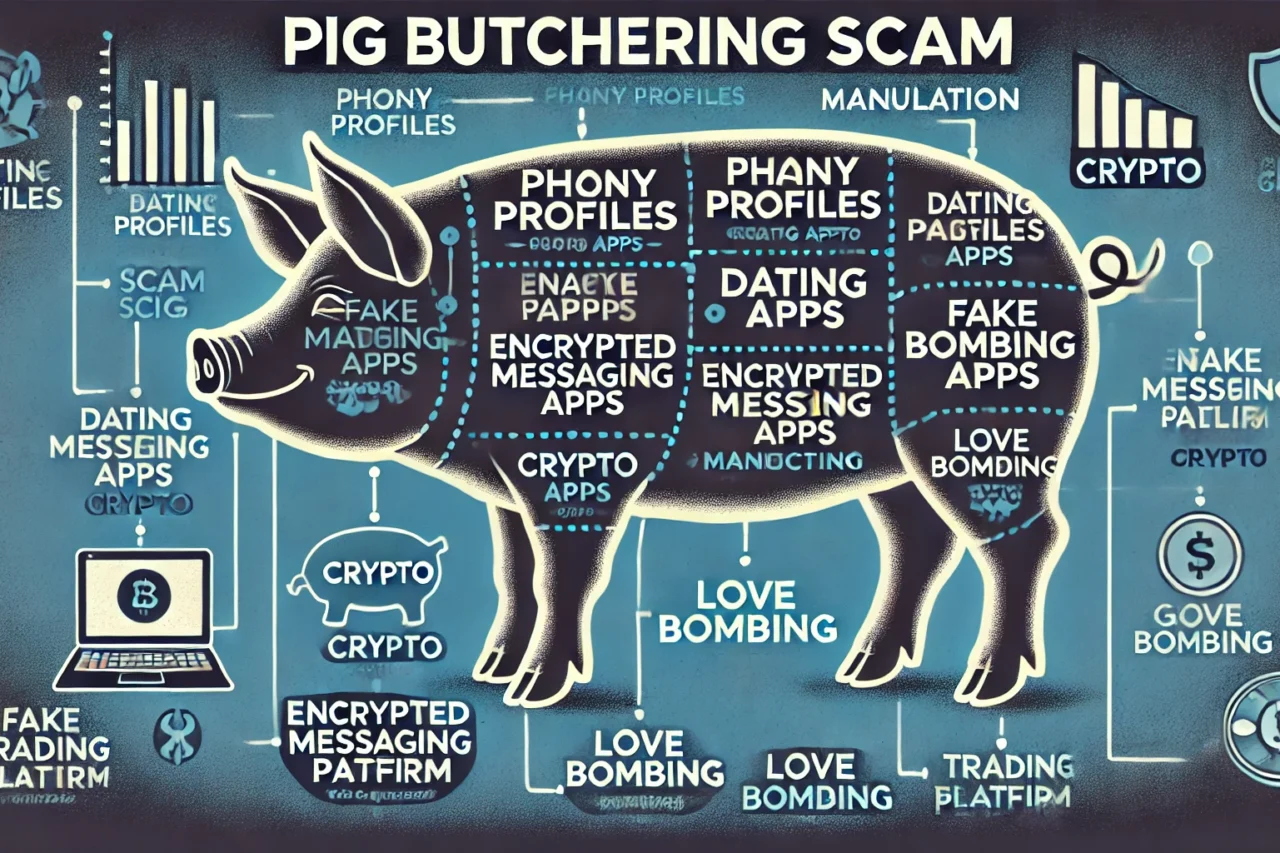Cyber Security for Parents: Keeping Your Children Safe Online
June 20, 2023, 8 min read
In this digital age, when technology plays such an important role in all of our lives, protecting the privacy and security of our children while they are using the internet has become an issue of the utmost importance. In light of the continuously growing number of online dangers, it is essential for parents to educate themselves on the potential dangers faced by their children and to take the appropriate precautions to safeguard them. This blog post is intended to act as a guide for parents as they navigate the world of cyber security. It will provide information on the potential dangers that children may be exposed to, useful safety guidelines, monitoring tools, safe browsing habits, social media best practices, how to deal with cyberbullying, and how to keep children safe while gaming.
Cyber Threats to Children: Understanding the Risks
As a result of their lack of awareness regarding the dangers posed by the internet, children are an easy target for cybercriminals. It is essential for you as a parent to be aware of the potential risks that your kid may face, including the following:
Predators may pose as peers to gain the trust of unsuspecting children, engaging in harmful conversations or soliciting personal information.
Bullying has extended its reach to the digital sphere, making children susceptible to online harassment, threats, or exclusion.
The internet hosts a plethora of explicit, violent, or age-inappropriate content that can negatively impact a child’s emotional well-being.
Children may unknowingly download malware or fall victim to online scams, compromising their digital security and privacy.
Online Safety Rules: Setting Boundaries and Expectations
Establishing clear rules and expectations regarding your child’s online activities is essential. Consider the following guidelines:
- Maintaining an Open discussion
It is important to keep an open discussion with your child and to encourage them to share their experiences, worries, and any questionable contacts they may have had online.
- Avoid Giving Personal Information
Teach your child to avoid giving personal information such as their entire name, address, phone number, school data, or passwords unless they are directly supervised by an adult. Examples of this type of information include their complete name, address, and phone number.
Stress how important it is for children to avoid communicating with strangers online and give them explicit instructions to alert you immediately if a stranger tries to make contact with them.
Teach your children how to adjust their privacy settings on all of the many platforms they use, and assist them in configuring their accounts so that only authorized users can access their personal information.
Using Technology to Monitor and Control Your Child’s Online Activity
Parents are able to actively monitor and supervise their child’s online activity while yet respecting their child’s right to privacy thanks to the assistance of technology:
- Software for Parental Control Make use of dependable software for parental control in order to filter improper content, set time limits, and monitor activities on the Internet. Qustodio, Net Nanny, and Norton Family are a few examples of similar services.
- Safe Search Filters: Safe search filters, which are supplied by search engines, should be enabled in order to block access to content that is sexual in nature or inappropriate for children.
- Agreements Regarding the Use of Electronic Devices Sit down with your child and discuss the appropriate use of electronic devices, appropriate times to use the internet, and the consequences for breaking the rules.
Safe Browsing Habits: Teaching Your Child to Avoid Dangerous Websites
Your child will have the ability to navigate the internet world more confidently if you teach them the proper behaviors to follow when they are online:
- Sources That Can Be Trusted
Instruct your child to check the legitimacy of websites before accessing the information they provide, and encourage them to rely on reliable sources such as educational institutions or recognized news outlets.
- Caution is Advised When Clicking
It is important that you teach your child to use extreme caution when downloading files or clicking on links from unfamiliar sources, as these can sometimes contain malicious software or efforts to steal personal information.
- How to Identify Websites That Are Secure
In order for your child to be able to identify safe websites, you should teach them to check for the phrase “https://” and a padlock symbol in the URL bar. These are indicators of encrypted connections.
Social Media Safety: Best Practices for Keeping Your Child Safe on Social Media
Due to the fact that they present opportunities for hazards, social media platforms demand an increased level of monitoring. Utilize the following best practices to improve your child’s safety when using social media:
As outlined in each social media platform’s terms of service, you are responsible for ensuring that your child is at least the minimum age required to use that particular platform. It’s possible that younger children don’t have the maturity level to handle the risks that come with using social media.
- Help your child configure their privacy settings on social networking platforms
Help your child configure their privacy settings on social networking platforms so that they can control who may see their posts, profiles, and other personally identifiable information. Encourage them to exclusively share their thoughts with their close friends and family members.
Teach your child to exercise caution when accepting friend requests, and encourage them to add only people they already know personally and can put their faith in. Remind them that their identities online could easily be deceiving.
- Inclusion of Personal Information
Stress the need of refraining from including any personal information that will be visible to others, such as a person’s complete name, address, phone number, or school. Talk about the dangers that could be posed by identity theft and stalking.
- Manners in the digital world
Teach your child to have good digital manners by instilling in them the importance of being respectful and considerate when interacting with others online. Bring to their attention the fact that both their words and their actions have repercussions.
Cyberbullying: Recognizing and Responding to Online Harassment
The problem of cyberbullying is a severe one that can have a negative impact on a child’s overall health and well-being. Prepare yourself to identify instances of cyberbullying and respond appropriately to them by familiarizing yourself with the following information:
- Examples of Cyberbullying
Be on the lookout for telltale indicators of cyberbullying, such as abrupt changes in behavior, a reluctance to use electronic devices, a withdrawal from social activities, or mental distress.
- Promoting Openness in Communication by
Create a setting where your child can feel comfortable confiding in you, and encourage them to do so whenever they are the target of cyberbullying. Give them your word that they won’t get in trouble for asking for assistance.
- Keeping a Record of the Evidence
Tell your child to document any instance of bullying, including screenshots, messages, or any other evidence that may be pertinent. When it comes to reporting the issue, this documentation can be extremely helpful.
- Teach your child how to report and block people who engage in cyberbullying
show them how to do both of these things. The vast majority of social media platforms and internet services come equipped with features that allow users to report abusive behavior.
It may be necessary to involve law enforcement or school officials in extreme situations of cyberbullying that entail threats, harassment, or unlawful acts in order to ensure your child’s safety and protect him or her from further harm.
Gaming Safety: Tips for Keeping Your Child Safe While Gaming Online
Children participate in an increasing number of activities online, including gaming, despite the fact that there are potential dangers associated with this trend. Put the following precautions into effect to ensure that your child is playing video games in a safe environment:
- Appropriate for Their Age Games
You should make sure that the games your child plays are appropriate for their age group by taking into consideration the game’s content, language, and online interactions.
- The Establishment of Boundaries
The length of gaming sessions, the suitable times to play, and the guidelines for engaging with other players should all be clearly outlined in your set of rules.
- Platforms for Risk-Free Gaming
Encourage your child to choose gaming platforms that have a good reputation, place a priority on the safety of their users, and include ways for other users to report and block inappropriate behavior.
- Keeping an Eye on the Action
It is important to keep an eye on what your child is doing while they are playing video games and make sure they are doing so in a good and secure setting. Get yourself acquainted with the games that they play as well as the online communities that they are a member of.
- Teaching Your Child About Online Interactions
It is important to teach your child the importance of online etiquette and respectful behavior when dealing with other gamers. You can do this by reading books or watching videos. Insist that they report any incidents of harassment or bullying that they encounter.
Conclusion
As a parent, it is your duty to place a high priority on your child’s safety when using the internet and to provide them with the education and resources they need to navigate the digital world in a risk-free manner. You may make the internet a safer place for your children if you are aware of the dangers that they face, if you establish appropriate boundaries, if you employ monitoring tools, if you instruct them in safe browsing practices, if you address the issue of cyberbullying, and if you take precautions to protect them when they play video games. Always keep an open line of communication and
Keep in mind that maintaining open communication and engaging in continual education are both essential. Maintain your awareness of the most recent cyberthreats and the rapidly advancing technology in order to change your strategies appropriately. You can instill in your child the ability to make responsible judgements and safeguard themselves while using the internet if you collaborate with them.
Finding a happy medium between watching your child and preserving his or her right to personal space is equally as important as taking the necessary precautions to keep him or her safe. Encourage people to develop their critical thinking abilities, question and assess the stuff they find online, and seek help when they feel they need it.
And finally, set a good example for others. Maintaining secure passwords, exercising caution with regard to personal information, and conducting oneself in a polite manner when interacting with others online are all examples of excellent online habits that you should cultivate for yourself. Your children will model their behavior after what they see you doing in the home.
In conclusion, protecting your child’s safety while they are online demands taking a preventative and all-encompassing approach.
You can create a more secure digital environment for your children if you are aware of the potential dangers, if you set clear boundaries and ground rules, if you use monitoring tools, if you teach safe browsing habits, if you implement the best practices for social media, if you deal with cyberbullying as soon as it occurs, and if you make sure they are safe when they play video games. Participate actively and maintain a high level of vigilance, and we will be able to safeguard our children as they discover the myriad joys that the internet has to offer.
If you want to learn more about cyber security awareness you can click here to navigate to our cyber security awareness blog page.




























